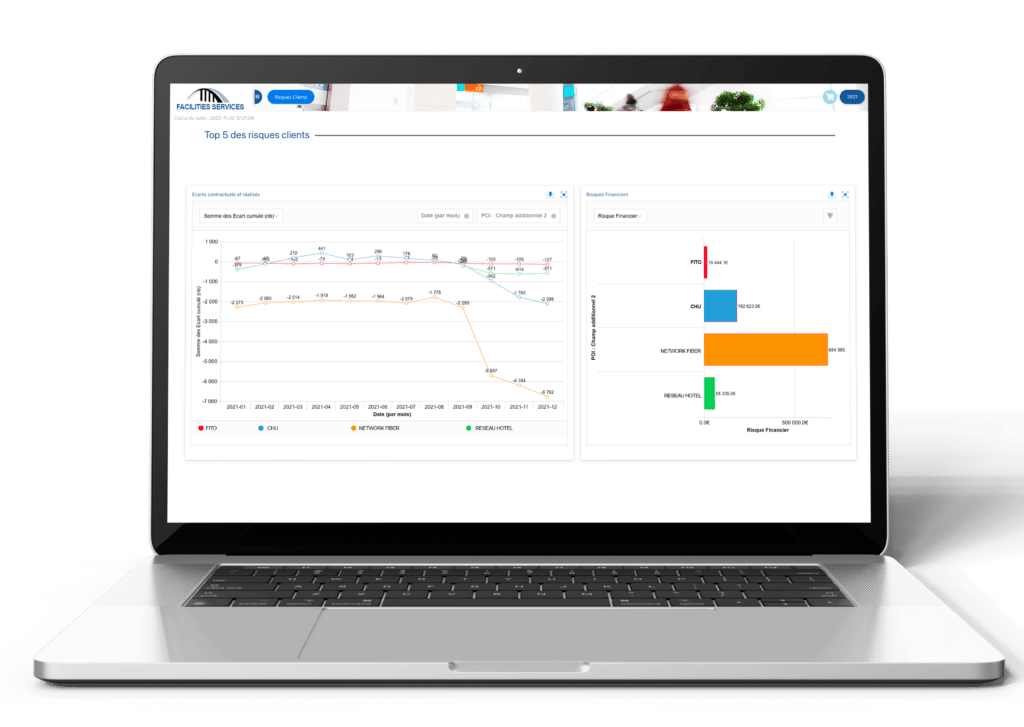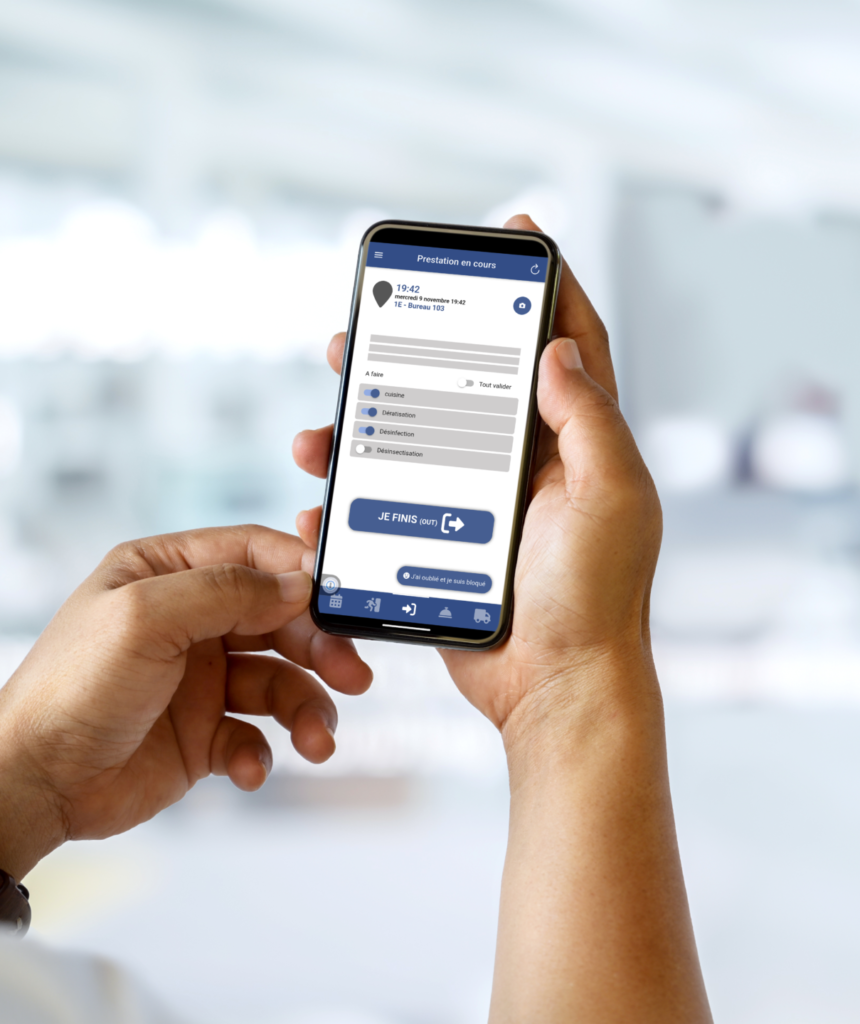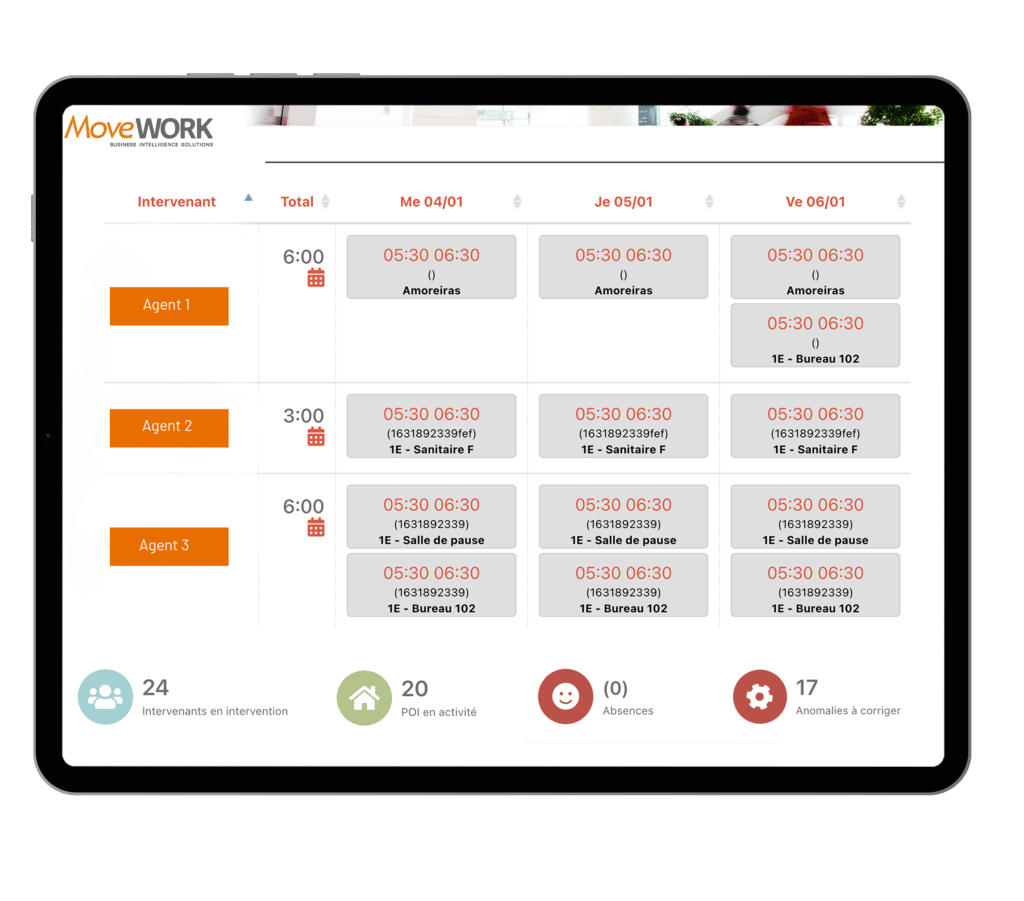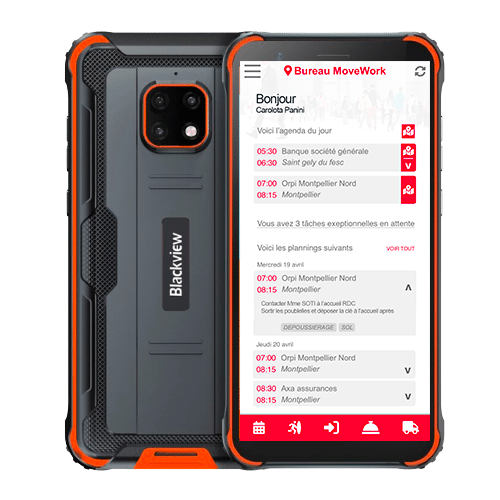Managing an organization, regardless of its size, is no small feat. With employees, clients, or service providers, stakeholders are often numerous. The management of interventions can quickly become complicated if the manager lacks the right tools.
The advent of new technologies has somewhat eased the management of interventions. Management software, mobile applications, or artificial intelligence are all tools at the service of automation. Discover our guide on how to automate intervention management in your company.

What does intervention management involve?
Intervention management is an organizational process that aims to plan, coordinate, and track all activities within an organization. This process involves a precise monitoring of the execution of operational tasks in the field.
Furthermore, intervention management includes a component of tracking and overseeing intervention requests, occupant queries, or customer service requests. The manager is responsible for allocating resources for all these tasks.
In addition, the manager oversees the processing and progress of interventions, ensuring their quality and adherence to the specified deadlines. Intervention management can be done manually or assisted by specialized software.
Who is involved in intervention management?
Intervention management applies to all sectors of activity. Some areas in constant contact with infrastructure, machinery, or public spaces are sometimes more affected: industry, transportation, facility management, etc. Generally, the functions and roles involved in intervention management are as follows:
- Technicians or service agents: Primary guarantors of task execution, these professionals go directly to clients or sites where interventions need to be carried out.
- Customer service or support service: This function receives intervention requests, consolidates them, and assigns them to the appropriate agents.
- Facility Manager or Head of General Services: These managers oversee the planning and organization of interventions. They coordinate teams, manage resources, and ensure that work is carried out efficiently.
- Operations Manager: These professionals are responsible for the overall management of preventive and corrective maintenance interventions.
What are the objectives of intervention management?
Intervention management addresses several needs within the company. Its implementation and proper functioning promote cost reduction and overall performance improvement. Here are the main objectives of intervention management:
- Improved responsiveness to unforeseen events or customer requests
- Optimization of costs, human resources, and materials
- Enhancement of service quality and customer satisfaction
- Reduction of downtime
- Monitoring and analysis of performance
- Continuous improvement of processes and intervention pathways
- Increase in individual and collective performance
The shortcomings of manual intervention management
To manage interventions, there are two main approaches: manual management and computerized management. While manual management may suffice for some small structures, this technique becomes obsolete as an organization expands. The proliferation of stakeholders, service providers, equipment, and sites makes manual tracking impractical.
Here are the main shortcomings associated with manual intervention management:
1. Risk of human errors: Managing numerous data points is challenging, if not impossible, manually. The repetition of time-consuming tasks increases the risk of errors

2. Lack of visibility: Manual management does not provide a comprehensive operational overview. Managers cannot track the availability and progress of interventions in real-time.
3. Coordination and communication difficulties: Without a computerized system and an exchange interface, coordination between different entities in the organization is complicated.
4. Ineffective management of unforeseen events: In the case of urgent interventions or unforeseen incidents, manual management does not allow for the quick mobilization of necessary resources.
5. Lack of traceability: Manual management does not offer a precise history of past, ongoing, or upcoming interventions. This technique is not ideal for collecting operational KPIs and subsequently analyzing them.
How to automate intervention management?
To overcome the shortcomings of manual management, the most effective solution is digitization. By computerizing the intervention process and automating certain tasks, organizations instantly gain efficiency.
To achieve this, organizations must equip themselves with specialized digital tools. An automated intervention management system, such as CMMS or Facility Management software, will centralize, plan, oversee, and track all activities of the organization. This system becomes the ally of the team leader or the head of general services.
However, the deployment of automation processes is often not straightforward. To automate intervention management, several actions need to be carefully considered and documented in advance:
Assessment of needs: To implement suitable tools, the company must first identify current management issues. On which aspect will automation assist? Planning? Quality? Monitoring? All these questions must be answered in advance to choose the ideal system
Selection of the appropriate software: CMMS, HR, Facility Management… these tools do not necessarily address the same needs. Depending on the infrastructure, type of equipment, and functions present in the company, the desired system will not be the same
Staff training: The introduction of digital intervention management may not be equally welcomed by all employees. Some workers may be more proficient with digital tools than others. Teams need to be trained in using the new software and supported during this period of change. Training is essential to ensure a high adoption rate
Identification of data to be collected and tracked: Clocking zones, type of intervention, services to be monitored… To implement automated intervention management, the nature of the data to be processed must be identified and listed before deployment
Automation of tasks: Recurrent and manual tasks that can be automated should be identified beforehand
Integration with business software or ERP: If your company uses other systems (CRM, payroll software, etc.), ensure that the intervention management system can be integrated for smooth information flow
What are the advantages of automating intervention management?
Automation of intervention management provides advantages in terms of productivity, profitability, and employee experience.
Operational and strategic efficiency
Automation streamlines intervention management processes by eliminating tedious manual tasks. This enables teams to save time and be more efficient in their work. By automating tasks, the risk of errors such as omissions, duplicates, or incorrect assignments is reduced.

Through automated management, teams can respond more quickly to urgent or unforeseen intervention requests. Automation tools provide real-time visibility into the status and processing of requests. Teams gain insight into upcoming tasks, schedules, etc., facilitating better coordination and more informed decision-making.
Finally, automation solutions enable technicians to access necessary information and update intervention statuses directly from mobile applications, promoting their mobility.
Optimization of resources for customer satisfaction
Automated intervention management offers better planning and resource optimization. The skills of agents are used efficiently, equipment is maintained when necessary, and interventions are developed for optimal use. This helps reduce operating costs and minimize material wastage (energy, consumables, etc.).
With improved intervention management, completion deadlines are met. Contractual commitments of service providers are upheld, and customers are satisfied with the service received.
Facilitated decision-making
Automating intervention management allows for the retention of a comprehensive history of all tasks performed, corrections made, and issues resolved. This facilitates performance analysis and decision-making based on accurate data.
Strategic dashboards can consolidate all performance indicators for quick and instant analysis. Automation tools collect data on compliance thresholds, costs, intervention times, deviations, etc. This data helps identify trends and modify operational processes if necessary.
How to improve field intervention management?
At the managerial level, Facility Management software is the perfect asset. But what about on the field? To improve intervention management at the agent level, there are several solutions:
- Mobile applications
- Clocking systems: QR Code, NFC, biometrics…
- Connected terminals: satisfaction, intervention, service kiosk…
- IoT : passage sensors, air quality sensors, odor sensors…
Automation of Intervention Management: The Best Tools
Automation of intervention management is essential for companies seeking to optimize their operations. To achieve this goal, there is a range of effective solutions. These advanced tools provide a comprehensive and detailed view of the activity, ensuring flawless productivity.
Intervention Management Software: The Manager's Ally
Facility managers, general services managers, hospitality managers… All these professionals require a competent system to manage all the flows within their organization. Agents, intervenors, equipment, machines, and sites need to be coordinated simultaneously.
For these managers, intervention management software is indispensable. These solutions allow managers to obtain a comprehensive overview of operations. In a single interface, managers can track current and upcoming activities, assess the status of the working environment, and locate employees.
Intervention management software serves as a true connected assistant. With its multifunctional toolbox, the manager becomes a versatile expert in various domains: attendance management, intervention tracking, quality control, strategic analysis, and more. By facilitating communication with teams and automating administrative tasks, these software solutions also free up time for managers.
Intervention Management Application: The Field Tool
At the heart of field operations, agents can be supported by mobile applications. These applications provide them with access to all relevant information regarding their activity: job sheets, tasks to be completed, alerts, leaves, and more.
Using their smartphones, agents can update the progress of their interventions without having to visit the office. A report is directly sent to their manager or the relevant site manager.
With these tools, agents optimize their daily organization and manage priorities independently. Collaboration between field operators and the rest of the company is strengthened.

MoveWORK Flow: The All-in-One Platform Tailored to Every Profile
To meet the needs of each profile involved in intervention management, MoveWORK Flow is the all-in-one platform you need. By bringing together all the necessary features to plan, coordinate, and track interventions, our platform becomes the ideal tool to optimize resource management:
- Digitize the planning of your operations and job sheets
- Supervise the presence of your intervenors and collect their working hours
- Measure service quality and user satisfaction
- Track and handle service requests and unforeseen events
- Manage your operations and collaborate with your clients and service providers
Mobile applications, IoT sensors, clocking systems, connected terminals… Our offer provides you with an all-inclusive package!


